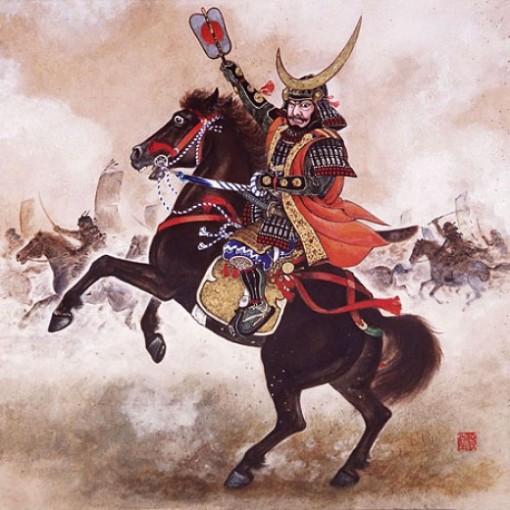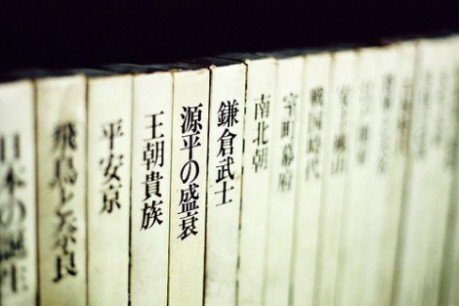This essay covers social norms and standards during Feudal Japan as seen through Taiko, Tree with Deep Roots, and other clips. Along with social norms I will go into detail on relationships between men and women, authoritative figures and lower class, along with the struggles that each class system faces.
<https://www.youtube.com/watch?v=eNtsUisXRmg>
As seen through Taiko, Tree with Deep Roots, and Samurai Champloo, there are many reoccurring themes that present themselves in numerous fashions, but all relating back to the relationships and struggles of this time period. The characters in each of these stories depict a multitude of relationships.
My purpose of this paper is to dig deeper into the standards and overarching themes of these relationships that may distinguish t reason for social norms. I will do so by viewing the relationship as seen through the forms of multimedia listed above, and comparing and contrasting the overarching themes that may apply throughout.
Why are women almost invisible in Taiko?
Why are the women’s opinion not taken into consideration in Taiko?
Why are lower class men treated poorly as seen in Tree with Deep Roots?
On the contrary, why was the women in Samurai Champloo treated equal to the two men she traveled alongside? Was she actually treated equal although she didn’t fight in the same regard?
Tree with Deep Roots
Tree with Deep Roots is a Korean drama series that brings social challenges and changes faced by their early rulers. While watching the Korean drama it was beneficial to already have an understanding of their culture through the book Taiko that our class is currently reading as well. Tree with Deep Roots encompasses the views of many different figures throughout the drama series. These figures include the highest level of samurai along with their Kings, middle class workers aspiring to be samurai, and the lower class that work as laborers for these upper classes. The series depicts the relationships of these classes and shows the similarities between each class. Although the men in Tree with Deep Roots may all be separated into classes by their names, clothing, and social rank, they all have similar overlapping concerns to which are brought to the table throughout. They may not recognize themselves as similar, but the audience can relate multiple characters to one another through their successes, struggles, and concerns during this difficult time period for the ruling and outlook of their country.
The series open with Ddol-Bok seeking revenge on Lee Do, South Korea’s ruler, as his father was killed under Lee Do’s ruling. The series then rewinds to tell the story of how Ddol-Bok and Lee Do came into the series and their relationship at that point. Lee Do is the King of Joseon although during this rein his father Taejong holds complete power, which he more often than not uses over Lee Do’s opinion. Both men have very different views on the way in which to rule Joseon. Lee Do believes in bettering the society as a whole by helping those to learn to read and write all while Taejong is a strict, harsher ruler who depends on his aggressive ruling tactics to shape the society of Joseon. Under Taejong’s ruling and aggressive hundreds and thousands of men have died fighting for their country and falling victim to Taejong’s expectations. Ddol-Bok’s father, among his friends, was one of those killed as a result of Taejong’s harsh rulings. This murder of Ddol-Bok’s father and friends is the reason for Ddol-Bok’s anger towards the king.
Overall, Lee-Do and Taejong hold differences of their outlook on the country. Lee-Do would rather use his efforts to better the country while Taejong uses his strict, swift hand to rule over everyone. Lee-Do’s rulings are based off literacy and an overall wanting to educate his country. In my opinion, Lee-Do’s rulings would bridge the gap between the classes and better illustrate their similarities creating a mutual respect between the two. Each class pats each other on the back, so-to-speak, in order to survive and succeed in Joseon.
Meanwhile in the book Taiko, the relationships are scattered and different in a certain light as compared to Tree with Deep Roots. Taiko grows up on the countryside in what seems to be a comfortable living situation as compared to Ddol-Bok’s in Tree with Deep Roots. Similar to Ddol-Bok’s, Taiko loses his father at a rather young age and is faced with providing for his family in a way that seemed unfair to him. Taiko would live away from home in the pursuit to become a great samurai.
Taiko
The book Taiko showcases many relationships throughout Taiko’s journey to being a samurai. The relationships include man versus man, father versus son, mother versus father, and superiors versus lower class. Each of the relationships listed depicts a set of social norms for this time period in Feudal Japan. Taiko’s mother Onaka stood beside her husband’s side no matter the terms, but in the end her opinion was never taken into consideration. For each conversation or debate she watched him battle with young Taiko or anyone else for that matter, no matter how much the end result could have affected her life her opinion was never inputted or taken into consideration. This wasn’t only a situation in Onaka’s household; it was the case for all women in these households. They were to keep the house in order no matter the struggles faced by their families, but never have an opinion be weighed in on.
Samurai Champloo
Samurai Champloo was an outlier in terms of the women’s treatment. The focus shifted throughout the film to the upper authorities to the ‘drifters’ who held fake passports to enter and exit the country. The drifters were comprised of two men and one female. Although upper class relationships didn’t involve the input of women, the relationship between these three young drifters contrasted the typical scenario. The two men were more invested in the female’s opinion and often asked her what was on her mind or how an upcoming scenario would overall affect her. However, they still faced challenges with the authoritative figures who frowned upon their journey and way they went about their illegal travels.
Supporting Evidence
Social Structure and Population Change explores the factors within Japan and China that reflect the organizational structure of the two regions. Although not in the specific areas of Taiko, it is beneficial to read the structures and decipher whether the same implications could be distinguished in their time period which would contribute to my thesis paper. In my thesis I am exploring the structure of the community in Taiko and roles that the women play. The women in Taiko are not seen as equals and their opinions are not taken into account for situations that affect their lives in the end result.
The article touches upon population growth and how it may affect the organizational structure within a region. With a wide spread growth in population growth the class of laborers that make up the lower half of their food chain, so-to-speak, may increase exponentially leading to wealth in the lower class in the sense of food and materials, but also this could lead to an overtaking of the upper class structure. On the other hand the upper class could grow drastically leading to an overabundance of samurai warriors to defend their territory. With this population growth would one think the roles of women would change? Would this factor in the way their opinions are taken? Would their roles be considered less sufficient?
The journal article derived from Schooler and Smith’s extensive research on the relationships between women and men in feudal Japan depicts the roles in which women play and the importance of each role. Gender equality is definitely an issue at this time, but with the power rankings taking form in the way shown throughout Taiko and the movies we view in class it is apparent that these changes were not meant to be made during this time period through the evolution of their country and stances as one. Women play many roles during this time period as well as in current time, but back in feudal Japan the women had to rank, so-to-speak, which roles were of more importance to them in order to stay in their households and please their men. Some women were fortunate to be married with children. In that case would they take higher priority over being a mother or caregiver to their husband? Another case scenario would be if the woman took high priority over being a mistress to a man rather than working to provide for herself and maybe her parents. This particular journal interests me because of the way in which it breaks down the roles of women and explore the mindset of this current time versus todays modern thinking’s of women who can be doctors, wives, mothers, and any other position that they could achieve.
Similar to the previous article, as it comes from the same journal, this article showcases concepts in which women fill roles that are self-rated. These self-ratings scale the feminine and masculine qualities and characteristics of those in feudal Japan in order to examine their place in the community. It deciphers the differences between men and women during this time period and then rank their qualities based on their skill sets and dealings within the household and community. Taking these statistics into consideration the findings transform the way in which one could see feudal Japan and how gender roles could be broken down.
Conclusion
All materials reviewed in class illustrated the relationships in Feudal Japan. While illustrating these relationships and deciphering the conflict or struggle it distinguished the reasoning and purpose for the relationship. Women weren’t viewed as credible or opinionated as they never held authoritative positions up until this point. In addition, the ideas of Lee-Do, if taken seriously and followed carefully, could raise the status of these lower classes all while lowering the bar for others. It would be a level and clean playing field for all in Joseon. The ideologies of Lee-Do would advance the country and steer the conflicts away from such aggressive and violent ways.
Work Cited
Nakamura, James I., and Mateo Miyamoto. “Social Structure And Population Change: A Comparative Study Of Tokugawa Japan and Ch’ing China.” Economic Development & Cultural Change 30.2 (1982): 229. Historical Abstracts. Web. 17 Mar. 2014.
Schooler, Carmi, and Karen C. Smith. “Social Structure Antecedents of Women’s Role Values in Japan.” Sex Roles A Journal of Research 4.1 (1978): 23-41. Springerlink. Web.
Sugihara, Yoko, and Emiko Katsurada. “Gender Role Development in Japanese Culture: Diminishing Gender Role Differences in a Contemporary Society.” Sex Roles A Journal of Research 47 (2002). Web.

